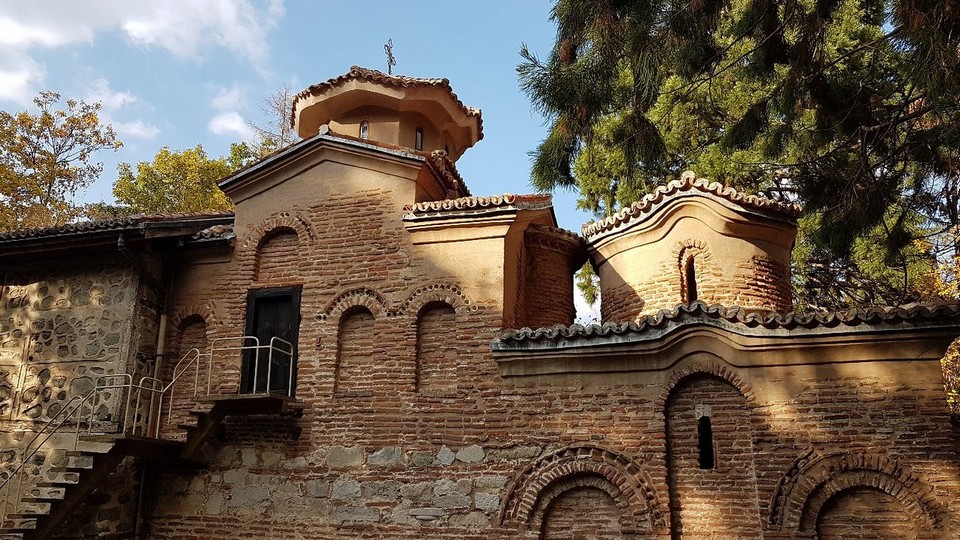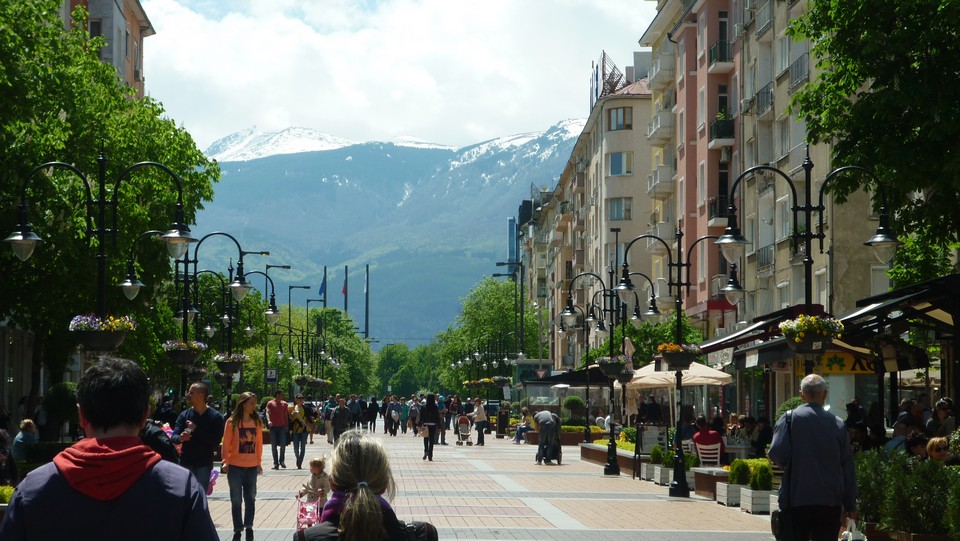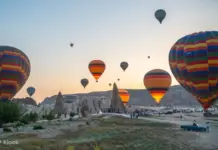There is no need to go to the ends of the Earth to discover lands that still hold so many secrets. Sofia — the capital of Bulgaria located at the foot of Mount Vitosha is one of the lesser-known historical lands in Europe, not yet on the familiar routes of tour operators, that’s why uninformed people like me mistakenly thought it was not worth a visit. But, it was a totally wrong! So, what to do in Sofia and how to plan a perfect budget trip to Sofia, Bulgaria for the first-time? Let’s check out our Sofia blog (Sofia travel blog, Sofia Bulgaria blog) with the fullest Sofia travel guide (Sofia guide, Sofia tourist guide, Sofia visitor guide, Sofia Bulgaria guide, Sofia Bulgaria travel guide) from how to get there, best time to come, where to stay, best places to visit and top things to do to find out the answer!
- Plovdiv trip blog — How to make a Plovdiv day trip from Sofia
- What to buy in Bulgaria? — Top +17 gifts, souvenirs & best things to buy in Bulgaria
- Where to eat in Sofia? — +11 best restaurants in Sofia Bulgaria
- 8 reasons why should you visit Bulgaria at least once in a lifetime
- 7 days in Japan itinerary: Suggested 1 week in Japan itinerary for what to do in Japan for 7 days



I came to explore Sofia in an autumn, the gateway to Bulgaria, where you usually start or end every trip to the “Land of Roses” – Bulgaria. Just a few hours drive from Istanbul, Sofia like the last capital of the West, is the ideal destination for those who prefer the slow way of travel. It may be slow because Sofia is not on the familiar routes of travel agents, we will stay away from the “traffic jam” of large groups of tourists. Maybe slow because Sofia has so much green space, take a slow and deep breath to enjoy the greatest gift that Mother Earth has given us: The air – the breath signifies life. Walking slowly and surprisingly, because wandering in the city center, it is difficult to imagine this is a megacity of nearly 1.3 million people, where more than a quarter of the population of Bulgaria is concentrated, it is strangely peaceful.

I visited Bulgaria in 2019, compared to Western Europe, Bulgaria is still poor and underdeveloped. For those who love the nostalgia of a time not far away, when the world was not as “flat” as it is today, in Europe there still was a “invisible wall” separating the East and the West, no need to go to the ends of the Earth, just going to Sofia makes us like we can step back in a time nearly two decades, showing an Eastern European city just like we imagined in black and white movies. But let’s go quickly, time will gradually erase all memories, traces in each of our minds as well as in every nook and cranny, street of this city.

Sofia blog: Overview of Sofia

Sofia is the capital of the beautiful country Bulgaria with a population of neary 1.3 million people. This city is located in the western part of Bulgaria, at the foot of famous mountain ranges such as Vitosha, Liulin and the Balkans. You may not know that Sofia was previously known by other names such as Triaditsa, Serdica (Serdika) or Sardica. The name Sofia dates back to the 14th century and is named after an ancient Catholic church called Saint Sophia, the oldest Catholic church in the 4th century AD. In ancient Greek, the name Sofia means wisdom.

Before Bulgaria gained its Independence in the second half of the 19th century, Sofia was just a small town with about 12,000 inhabitants. This explains why the older architectures, buildings that still standing in the city are of relatively modest stature. The city really changed when it became the capital of the young Bulgaria in 1879. The city center as we know it today was reshaped and planned from that day, with buildings worthy of its position as a capital of the new kingdom. The Cathedral of St. Alexander Nevsky is a symbolic work not only for Sofia but also for the whole country of Bulgaria, like the Eiffel Tower of Paris, or the Colosseum of Rome. This should be picked as the first starting point, all other attractions in the central area are within walking distance.

Why should I visit Sofia?

- Cuisine: Sofia is a food paradise! Bulgarian cuisine bearing bold oriental style: Rich in spices, rich in sauces, and diversity of meat. This is one of my favorite places to eat and drink, because it’s so cheap! And lots of great, must-try restaurants in Sofia.
- Culture: The intersection of traditional culture and communist culture is present everywhere in Eastern Europe. So is Sofia. However, Sofia has something much more ancient, nostalgic and mysterious. Eastern Europe is already strange and foreign. Coming here is like approaching a different culture from Western Europe, very interesting.
- Sofia is the paradise of street art.
- And also a paradise for history buffs. Especially during the Communist period.
- The beaches of the Balkans are as beautiful as the sunny Mediterranean beaches.
Jazz: Charming and sweet. Jazz clubs are everywhere, and they’re all pretty special.

Sofia travel blog: When to come?
No matter what season you travel to Sofia, you will have the opportunity to enjoy your own experiences with its own beauty. Summer is the time when the flower fields of Bulgaria bloom, so traveling to Sofia this season visitors will have the opportunity to admire the beautiful flowers.

The weather in autumn and spring is cool, which is also very convenient for sightseeing and exploring, and this is also the time when many festivals are held. For those who love the winter cold of Europe and love to watching snow fall, you can travel to Sofia in winter, from December to April every year.

Sofia guide: How to get to Sofia?
By plane

Sofia Airport (IATA code: SOF) is located about 9 km East of the city center. To getting from the airport to the city center, you can go by public transport (bus and metro), it costs about 1.6 lev ($0.95), or take a taxi.
By public transport: The most convenient way to get to the city center is to take the metro line M1, a single ticket costs 1.6 lev/way ($0.9), each luggage size over 60cm*40cm*40cm has to buy an extra one ticket. At the airport, the train stops at Terminal 2, the first train in the morning runs from 5:30 am, the last train departs at 12 pm. It takes about 20 minutes to get to the city center.
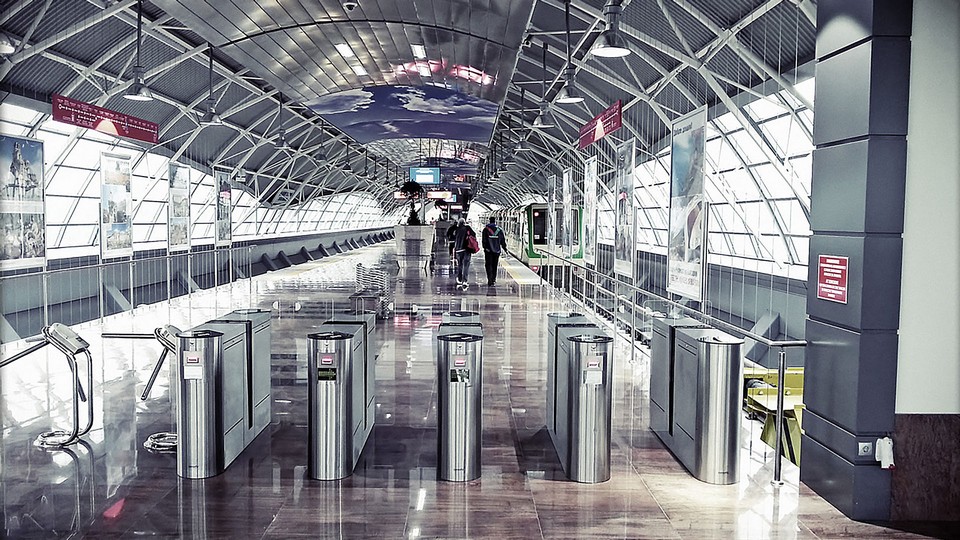

By bus: In addition to the subway, there is also a bus number #84 to getting from the airport to the city. Bus fare is the same as subway fare, a single ticket costs 1.6 lev/way (0.9), each luggage size over 60cm*40cm*40cm must buy an additional ticket. At the airport, the bus stops at both Terminals 1 and 2. It takes about 40 minutes to get to the city center. The bus stops to pick up and drop off passengers at M1 platform, St. Kliment Ohridski/Sofia University station in the city.

By taxi: The only official taxi company operating in the airport is O.K. Supertrans (www.oktaxi.net). This is also the largest and most prestigious taxi company in Sofia, it takes about 14 to 20 leva (€7-10) to get to the city.
By train
The Bulgarian state railway company is named Bulgarski Darzhavni Zheleznitsi (www.bdz.bg). Sofia Central Station is located at: Bulevard “Knyaginya Maria Luiza” 100, 1202 Tsentralna, Sofia, Bulgaria, which is relatively close to the center. If you want to take public transport, the station is next to Central Railway Station on the M2 street. This is also Sofia’s major transport hub, when right next to the central station are the city’s two main bus stations: Central Bus Station for domestic travel and Serdica Station for international routes.


The Bulgarian state railway system is divided into three types of trains: Ekspresen (“high-speed” trains – high-speed here in quotation marks), bârz (fast trains) or pâtnicheski (slow trains). The ticket is fully printed with Cyrillic (Kirin) script, some of the following words may be helpful to read the important information on the ticket:

Some Bulgarian words to read important information on train tickets:
- Клас – klas: Ticket class.
- Категория – kategoriya: Type of train.
- Влак – vlak: Train’s number.
- Час – chas: Departure time.
- Дата – data: Departure date.
- Вагон – vagon: Cabin No.
- Място – myasto: Seat No.
Getting from Bucharest, Romania to Sofia by train
There are 2 trains a day.
The day trip departs at 12:45 pm, arrival at 11 pm. I recommend you to take this day trip. Especially solo travelers like me. The train trip lasts 10 hours long, which means arriving in Sofia at around 11 pm. This trip is usually extremely deserted, as if it has been forgotten in time. Those who choose it either have a quiet, contemplative, old-fashioned or backpackers who want to save energy and time. I don’t know what I belong to, LOL. But all I know is that during that train, my spirit was quiet as if merging with the vast scenery outside as well as the calm atmosphere inside.
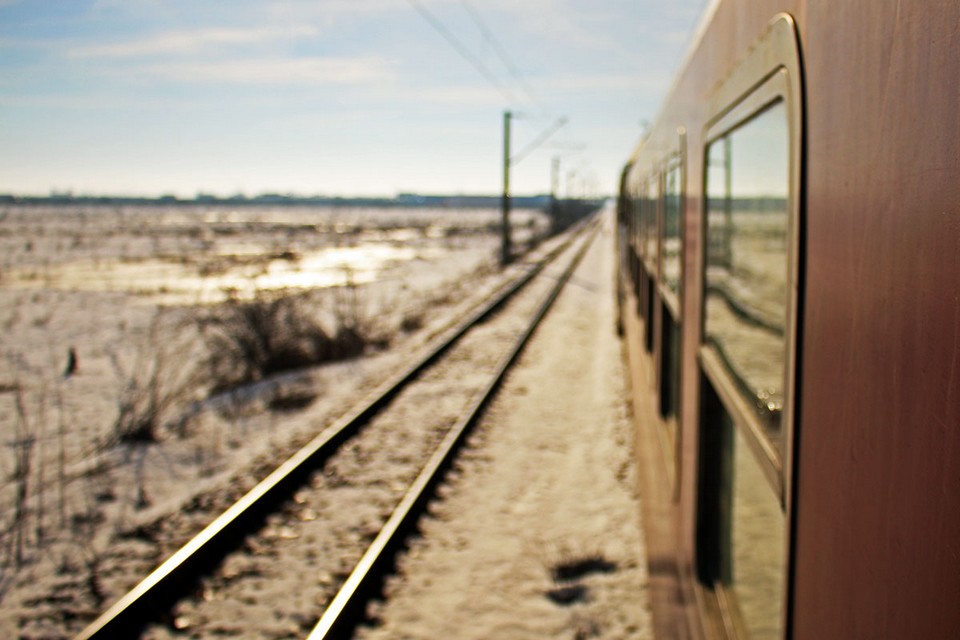
The second train is the night train. This train leaves Bucharest at 11s:12 pm, arriving in Sofia at 9:30 am the next morning. If you go with few people, you should not take this trip. The security of Eastern Europe is not very good. Nighttime there are often robbers and pickpockets, or illegal immigrants.
Eastern Europeans hardly speak English. When buying train tickets, please go to the international counter, not the domestic counter. Bucharest train station is very chaotic, no different from Vietnamese train stations. So, come a little early to find the ticket counter. The fare about 50 lev (25.56 euros).
Bring lots of drink water and food to “kill” the time. Fully charge the phone battery also. The scene on the road passing through the window is so enchanting. Open up the mind.
Bring lots of tissues. You will need it a lot. If possible, go to WC before get on the train. The train’s toilets are horribly dirty.
When crossing the Romanian border to Bulgaria, have your passport ready. The customs officer will keep your passport. Don’t worry, in Eastern Europe they still do so.
By bus
Because the Bulgarian railway system is quite old, most Bulgarians choose to travel by bus. The city’s two main bus stations are next to each other, at address: bulevard “Knyaginya Maria Luiza” 100, 1202 Tsentralna, Sofia, Bulgaria: Central Bus Station for domestic routes and Serdika Bus Station for international travel. As written above, these two bus stations are located right next to the central railway station, relatively close to the city center. If you want to take public transport, the nearest metro station is Central Railway Station on the M2 street.

In addition, there are two smaller bus stations in Sofia.
West Bus Station (Ovcha Kupel): Address: No. 1 Ovcha Kupel Blvd. From the center to Ovcha Kupel bus station, take metro line #5 and get off at kv. Ovcha Kupel station, if you take a taxi from the center it takes about 7-12 leva (€3.5 to €6). This is the departure point of the bus to Rila Monastery.
Southern Bus Station: Address: 23 Dragan Tsankov Blvd 23. The bus station is about 300 meters from Joliot-Curie M1 metro station, about 7-12 leva (3.5 to 6 euros) by taxi from the center.

You can refer to the travel time by bus from Sofia to some other destinations in the Balkans as follows:
- Plovdiv: It takes 2 hours.
- Burgas: It takes 6 hours.
- Varna: It takes 7 hours.
- Veliko Tarvono: It takes 3 hours.
- Istanbul: It takes 10 hours.
- Bucarest: It takes 7 and a half hours.
- Skopje: It takes 5 hours.
- Belgrade: It takes 8 hours
In Bulgaria, to find long distance train or bus schedules, you can access www.bgrazpisanie.com.
Sofia travel guide: Getting around Sofia
Public transport

The public transport system in Sofia is very cheap. The current system includes 2 quite modern metro lines (the third line is under construction), along with 15 tram lines and many bus lines, quite old but clean. Metropolitan company (www.metropolitan.bg) manages the system. Tickets are sold at major stations, at newsagents or bought directly from the driver. Note that at the time of our stay in Sofia, there were relatively few automatic ticket counters that accepted card payments, most of which had to be purchased with coins. You can use www.eway.bg to find out how to get between two points by public transport.
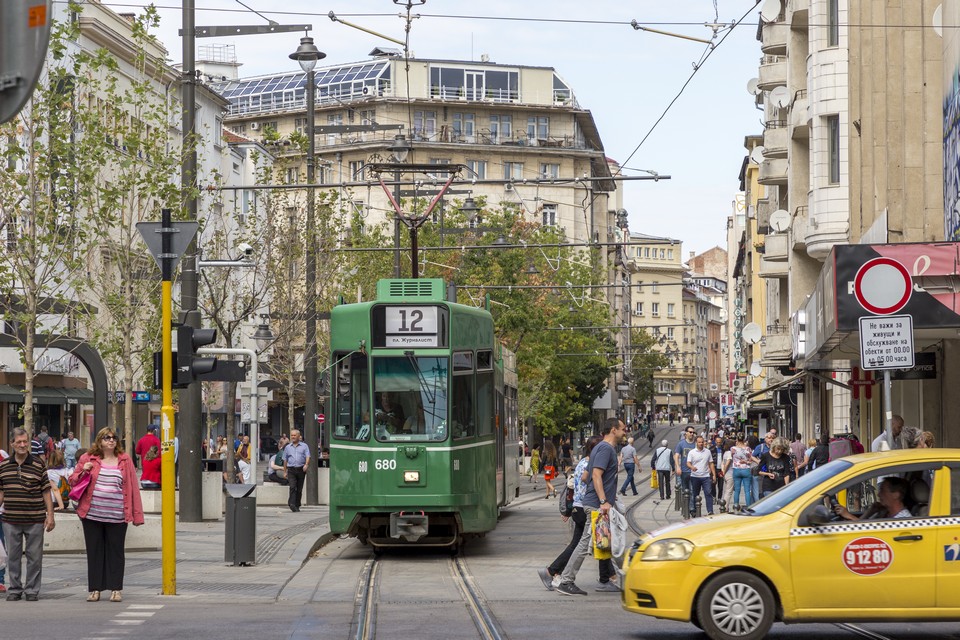

Regarding transportation tickets, they can be divided into three main categories:
- Single ticket: For 1.6 leva (€0.8). Note that tickets for the metro and other means are different and cannot be shared, even though they are the same price.
- Ticket for 10 trips: For 12 leva.
- Day pass for all vehicles: For 4 leva.
Taxi
Taxi prices in Sofia are still relatively cheap, the most prestigious taxi company in Sofia is O.K. Supertrans (www.oktaxi.net /Phone: +359 2 973 21 21). The fare is 0.70 lv when getting on the car, 0.79 lv/km for the time frame from 6am to 10pm, 0.90 lv/km at night, 0.22 lv per minute waiting. Getting around in the city center usually costs about 6 lv (€3)/trip, going to the suburbs usually only goes up to 15 lv. Note that many taxis even make fake logos that are similar to the company. If your phone has a network, you can use the TaxiMe app to call a car, which has features quite similar to Uber such as rating and giving points to driver, as well as calculating the estimated fare for the distance before booking a car.

Sofia’s central area is relatively small, within walking distance between attractions. So, we almost didn’t use public transport on this trip, just went to try it once or twice to get experience about writing again for you. When going out late at night, because the taxi price is still quite cheap, so our group chose this option for convenience and safety.
Car rental in Sofia
Our trip this time is a self-drive roadtrip to save time, and take advantage of the relatively cheap prices in Bulgaria. I found a car rental company for about half the market price and was quite satisfied with their service. A very small company called mybudgy.com is run by two brothers-in-law, one French and one Bulgarian. Although the car is not new, I rented a Renault Symbol car that has gone 160,000 km but still runs well and costs €15 a day. For another €5, they will deliver the car right at the airport when I arrive and then pick up the car at my hotel. We only deal with them first via e-mail and when we arrived at the airport, we found that the staff was waiting for us on time. When renting a car in Bulgaria, there is usually a toll stamp that is purchased annually and there are no additional fees.
Sofia blog: Where to go and what to do
Churches
St. Alexander Nevsky Cathedral
Address: pl. “Sveti Aleksandar Nevski”, 1000 Sofia Center, Sofia, Bulgaria
Hours: 7AM–7PM
Getting there: Metro line M1, get off at St. Kliment Ohridski/Sofia University Station.

As mentioned above, the church is a symbolic work not only for Sofia but also for the whole country of Bulgaria. The church was built to commemorate the Russian soldiers who died in the struggle for the liberation of Bulgaria in 1877-1878. The construction began in 1882, but it was not completed until 1912. The church was designed by Russian architect Alexander Pomerantsev, with the participation of Bulgarian, Austrian, German, Italian and Czech artisans in the typical Neo-Byzantine style, typical of Russia in the 19th century. Both interior and exterior of the church are worthy of the stature of the iconic building for a country. Built on the highest ground in Sofia, the gilded domes of the church can be seen from the top of Vitosha mountain or almost anywhere in the city.

St. Sophia Church
Address: ul. “Paris” 2, 1000 Sofia Center, Sofia, Bulgaria
Hours: 7AM–6PM
Getting there: Metro M1 to St. St. Kliment Ohridski/Sofia University Station (A 2-min walk from the Alexander Nevsky Cathedral)

Before being named Sofia, the city was known by many other names: Serdika, Sredets and then Triadica. It was not until the 14th century that the name Sofia was called, after the church of Saint Sofia, the oldest Catholic building in the city built in the 4th century AD. It’s located directly opposite the church of St. Alexander Nevsky, Church of St. Sofia has a completely opposite style, simply with bare red brick walls without plaster.
Church of Sveti Sedmochislenitsi
Address: ul. “Graf Ignatiev” 25, 1000 Sofia Center, Sofia, Bulgaria
Hours: 8AM–5PM

From Sveti Aleksandar Nevski Square where the church of the same name is located, we headed towards the Parliament building (National Assembly building) located in a corner of the square, before walking along the street named ul. “Tsar Shishman”. “Tsar Shishman” Street is one of my favorite places in Sofia, an area full of book shops, art and craft shops as well as renovated bars in old buildings and villas, combining nostalgia and modernity, delicate and timeliness. At the end of the road is the church of Sedmochislenitsi, set in the middle of a beautiful, green and quiet garden. It is special because this is an old mosque, built by the Sultans to overshadow all the Catholic churches in this city. It has a beauty of the blending between the East and the West. The church used to be turned into a prison after Independence day before being converted into a Christian Cathedral.

Church St. George Rotunda
Address: bul. Kniaz Aleksandar Dondukov 2, 1000 Sofia Center, Sofia, Bulgaria
Getting there: Metro M1 or M2 to Serdika Station

Located a little behind Knyaz Aleksandar I Square. The achitectural work that intrigues me the most Sofia, located in the common courtyard of the city’s most luxurious 5-star Sheraton hotel and the Bulgarian Presidential Palace, still standing and is still open to visitors. The St. George’s church was built in the 5th century AD under the Byzantine Empire, is one of the oldest works in Sofia still standing.
Boyana Church
Address: ul. “Boyansko ezero” 3, 1616 Bojana, Sofia, Bulgaria
Hours: 9:30AM–6PM
Getting there: From the center to here, take the metro line M2 to Vitosha station, take bus #64 and get off at Boyansko Hanche station. If taking a taxi, it costs about 15 lev (€7.5).

If you have more time, you can visit the Boyana church located on the outskirts of Sofia, one of the nine UNESCO cultural heritage sites of Bulgaria.
Slaveykov Book Market at Petko R. Slaveykov Square
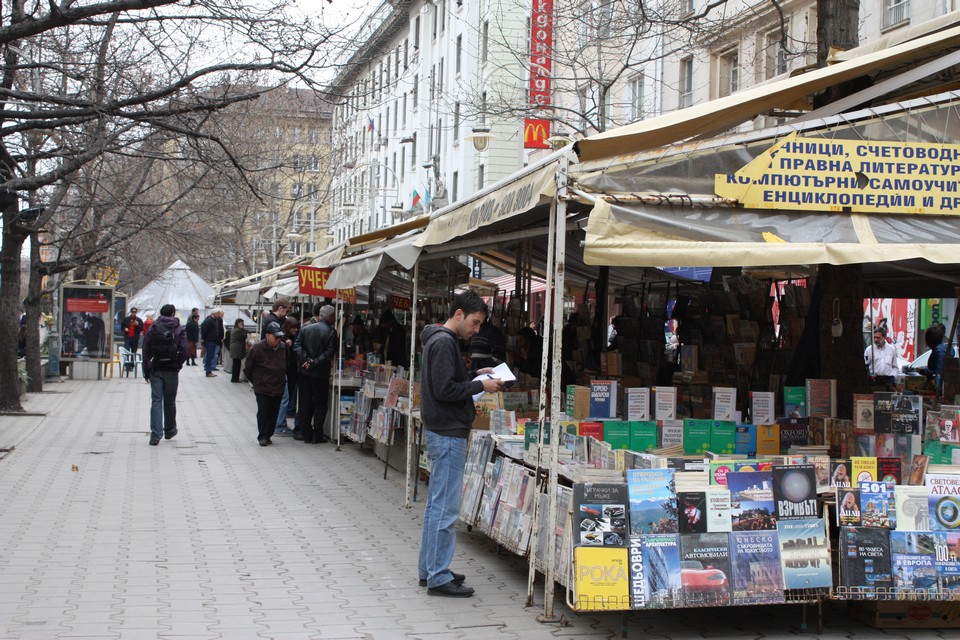
Not far from the Church of St. Sedmochislenitsi is a book market located at Petko R. Slaveykov square. When it first opened in the 90s, sellers of used foreign books began to gather in the square, just outside the City Library, when the need to learn about Western culture was no longer prohibited. Need any foreign language book, just ask the book sellers here, they will find it for you. Nearly 30 years after opening, the book market continues to operate as a cultural feature of the capital Sofia.

Ivan Vazov National Theatre
Address: ul. “Dyakon Ignatiy” 5, 1000 Sofia Center, Sofia, Bulgaria
Getting there: Metro line M1 or M2, Serdika Station
From the Slaveykov book market, if you follow the street Georgi Rakovski, you will come to the Ivan Vazov theater which was opened in 1904 with a capacity of 940 seats in Neoclassical architectural style, the most magnificent and elegant building in the Bulgarian capital. Along Rakovski Street there are 8 more theaters, and countless Bulgarian Ministries. What I especially like is the city flower garden in front of the theater. On hot summer days, it’s a great place to stop by for a refreshing drink in the garden refreshment shops. The garden is also a meeting point for chess enthusiasts in the capital.
Knyaz Aleksandar I Square

Located right next to the city flower garden, it can be said that this is the most “powerful” square in Bulgaria. Around the square are the former Royal Palace “Vrana”, now the National Art Gallery, the Largo Complex – the symbol of half a century of Socialism – including the former headquarters of Bulgarian Communist Party, the former Department Store Building TZUM and the Presidential Palace of Bulgaria. To the east of the square is the Russian Catholic Church.
Getting there: M1, M2 to the Serdika Station.
Zenski Pazar Market at Stefan Stambolov Blvd
Address: Женски пазар, bul. “Stefan Stambolov”, 1202 Sofia, Bulgaria
Hours: 8AM–7PM
The flea markets selling local produce always are an indispensable place in each of our journeys. The noisy scene crowded, chirping, local products sold at the market will clearly show the traditional culture of that land.

The Prince Alexander of Battenberg Square
This square is located in the heart of Sofia, close to Sofia’s National Museum of Natural History and Russian Church “Sveti Nikolay Mirlikiiski”. This square is named after Prince Alexander of Battenberg, the first prince of modern Bulgaria. This is a convenient starting point for visitors to visit other attractions in the city.
Memorial Tomb of Alexander (Battenberg Mausoleum)
Address: ul. “Hadzhi Dimitar” 17, 1000 Sofia Center, Sofia, Bulgaria
Hours: 10AM–5PM/Saturday, Sunday: Closed
Opened: 1897

This tourist attraction is located on Vasil Levskim Blvd, one of the busiest boulevards of Sofia, but the space inside the mausoleum is completely quiet and cozy. When visiting this mausoleum, you will feel like you are lost in another space, both peaceful and cozy, the architecture of the tomb is also very beautiful and unique. This is a place well worth a visit.
Vitosha Boulevard

This avenue is the main commercial street of Sofia and also one of the 22 most expensive commercial streets in the world, so it is also a must-stop for visitors. This place has many fashion shops, restaurants, bars… very bustling. Vitosha Boulevard prohibits all vehicles except trams with the length of 2.7 km from Sveta Nedelya Square to South Park, so you can leisurely walk around to visit and shop.
Sofia blog: What and where to eat?
Tarator (Bulgarian Cold Cucumber Soup)

This is an extremely famous Bulgarian dish often used in the summer, this dish is made from yogurt, cucumber, garlic, dill, walnut… then mixed together to creat a delectable soup.
Ovcharska Salata
You should try this special salad. Ovcharka salata is a traditional Bulgarian salad with ingredients that are popular in Bulgaria such as cucumbers, carrots with mushrooms, ham and grated eggs.
Gyuvetch

This dish is one of the very famous Bulgarian main dishes with the ingredient of grilled meat combined with stewed vegetables including tomatoes mixed with olive oil, onions, mushrooms and herbs. The taste of this dish is quite attractive and easy to eat, so it is also loved by many tourists.
Banitsa

For those who have visited Sofia as well as traveling to Bulgaria, they will be very familiar with this cake, this is the most popular traditional pastry in Bulgaria. Cakes can be made from the main ingredients of eggs, white cheese, yogurt, and add pumpkin or apple for a sweet and pleasant taste. This cake is often used as a Bulgarian breakfast.
In addition to the above dishes, you can also taste many other attractive dishes in Sofia such as Lukanka, Teleshko vareno Soup, Shopska Salad, Pastarma, Shkembe chorba, Pacha, Tatarsko kufte… or enjoy traditional drinks such as beers like Zagorka, Pirinsko Pivo, Astika, Kamenitsa… Distilled drinks like Rakia, Mastika…
Where to eat?
Bulgarian cuisine has the characteristics of the Balkans, with the influence of 500 years under the Ottoman Empire, so with a little oriental flavors. Key ingredients can include Sirene white cheese. Bulgarian girls are taught by their mother the first lesson at homemaking, “if in doubt add sirene”.
As a country with a temperate climate located on the Black Sea coast, Bulgarian agricultural products are extremely rich. Bulgarians usually start with a bowl of soup cooked with seasonal vegetables. After the soup is the Shopska salad before the main course: Cucumber, onion, fresh tomato sprinkled with pepper, grated sirene and parsley.

Among the typical main dishes of the Balkans, there is unique Sač. Sač is the name of a type of earthen pot or pan with a lid, the Balkan people buried for many hours in charcoal, used it as a kind of casserole, cooked on low heat. In a pot, often mix a variety of vegetables, peppers and onions, potatoes, mushrooms … with meat and cheese, then cover with lid and leave in the oven for many hours. The flavor of the ingredients is preserved, the sweetness from ingredients mixed together, if not too fatty and often too full, a serving that is difficult for one person to eat up, then this is a very good dish.

Influenced by Greek and Turkish cuisine, the Bulgarian charcoal barbecue is also tasty. Among the different types of grilled meat, it is possible to mention: Kebapcheta, kioufteta (minced meatballs with onions and parsley), chichtchéta (grilled meat on skewers), karantchéta (sausages), parjola (ribs). More delicious if accompanied by a cold beer of two local brands Kamenitza or Zagorka.

Ethno Restaurant
Address: Sofia, St Alabin 35, Bulgaria
Hours: 10AM–10PM/Saturday, Sunday: Closed
Phone: +359 88 401 1177/+359 88 440 2109.
Without the “aboriginal people”, Uncle Ivelin, my mother’s friend showed the way, I would never have found the place. Located in the basement of a building on a street not far from the Bulgarian Presidential Palace, the entrance to the shop is only a modest panel, unexpectedly in the basement there is a very historic restaurant, which I observe, so that city businessmen often come and receive guests. Bulgarian food, exquisite and delicious. Skillful service. The shop is quite luxurious, but somehow I still think of the style of the ladies of the Department serving middle-high-class cadres in the Socialist era. Prices are high for the Bulgarian life, but within acceptable range, around 20 lv (€10) per person including wine.

Krivoto
Address: ul. “Sveti Kliment Ohridski” 10, 1504 Sofia Center, Sofia, Bulgaria
Hours: 11AM–10:30PM
Phone: +359 2 943 8403

Located right next to Sofia University, this is a familiar address to both students and teachers of the school. The food is diverse, from Western European cuisine to more special Bulgarian dishes, simple but well prepared to my taste. My experience in Bulgaria, when entering a restaurant without knowing what to order, just order a grilled fish: Extremely tasty, fresh, firm and juicy. The price is about 10 lv/person including drinks.
One More Bar
Address: ul. “Tsar Ivan Shishman” 12, 1000 Sofia Center, Sofia, Bulgaria
Hours: 8:30AM–2AM
Phone: +359 88 391 0296/+359 87 769 3735
My wife has a Bulgarian friend who returned to Sofia after graduated from the university. She made an appointment to meet us at this very interesting bar, on the street “Tsar Shishman” is my favorite place in Sofia, an area filled with many book shops, very lovely small craft and art shops. The renovated bar in an old villa reminds me of French villas in Hanoi, with a patio that’s nice in the summer, while the indoor is more modern, combining nostalgia and modernity, delicate and timeless. The bar’s very good bartenders have delicious and strange cocktail recipes. The price is about 5 lv a drink.

Read more: Where to eat in Sofia? — +11 best restaurants in Sofia Bulgaria
Sofia guide: Some tips before you go
- Money exchange: Bulgaria does not use the Euro (€) yet but uses the lev – the plural is leva (abbreviated as лв (lv) or BGN). In preparation for Bulgaria’s entry into the Euro Zone, the lev-euro exchange rate has been unchanged since 1999, €1 ~ 1.95 lev. For ease of calculation when buying, it is recommended to convert 1 lev ~ €0.5. Exchange money in big cities like Sofia is relatively simple, almost all major bank branches offer euros at this rate. Only avoid exchanging at stations, bus stations or airports where the exchange rate will not be favorable. As well as absolutely avoid exchanging on the street, easy to encounter scams. Ask them first if they charge a service fee. If not, you can ask them directly where to exchange without service fee.
- Language: One thing that is a bit inconvenient when traveling to Bulgaria, especially when going to remote areas, is that they use the Cyrillic (Kirin) script, which makes me sometimes like an illiterate, unable to read restaurant names, addresses, etc. The site bg.translit.cc can be used to convert Cyrillic characters to the Latin alphabet, at least you can reading address, spelling and guessing some terms.
- In Bulgaria, nod means no. Shaking head means yes. This may seem confusing at first.
- Mineral water is drinkable everywhere around the city.
- Visa: Bulgaria is not part of the Schengen area, so a visa is required to enter. However, if you have a Schengen visa, you can enter for less than 90 days. Or other residence papers are also ok. I have an Italian residence card, easy entry, no problem. Most are so. They interrogated a little at the border. You can check here.
- Bulgaria’s train system is very bad, tattered, slow. But extremely-cheap, usually half the price of a bus or coach. As long as it’s daytime, there’s no issue. I like it because it feels nostalgic. But you should think before taking the train. Because you may be shocked at how “ruined” they are.
Sofia blog: Where to stay?
Below we recommend some best budget, mid-range and upscale hotels with good ratings and reviews you can refer to.
- Central Hotel Sofia (Agoda.com or Booking.com)
- Sense Hotel Sofia (Agoda.com or Booking.com)
- Grand Hotel Sofia (Agoda.com or Booking.com)
- Novotel Sofia (Agoda.com or Booking.com)
- Hotel Anel (Agoda.com or Booking.com)
- Sofia Hotel Balkan, a Luxury Collection Hotel, Sofia (Agoda.com or Booking.com)

Check more top and best hotels in Sofia on Agoda.com or Booking.com.
Sofia guide: Some best day tours, trips, activities and transfer services, tickets in, from and to Sofia you can refer to
- Nis Day Tour from Sofia
- Plovdiv Day Tour from Sofia
- Rila Monastery and Boyana Church Tour from Sofia
- Rose Valley and Koprivshtitsa Tour from Sofia
- Plovdiv and Koprivshtitsa Combo Day Tour from Sofia
Read more: Where to eat in Sofia? — +11 best restaurants in Sofia Bulgaria and Bulgaria travel guide here.
































![10 best airports in Asia in 2016 [RANKED] kuala-lumpur-international-airport-best airports in asia in 2016 by skytrax ratings](https://livingnomads.com/wp-content/uploads/2016/08/29/kuala-lumpur-international-airport-best-airports-in-asia-in-2016-by-skytrax-ratings-218x150.jpg)










